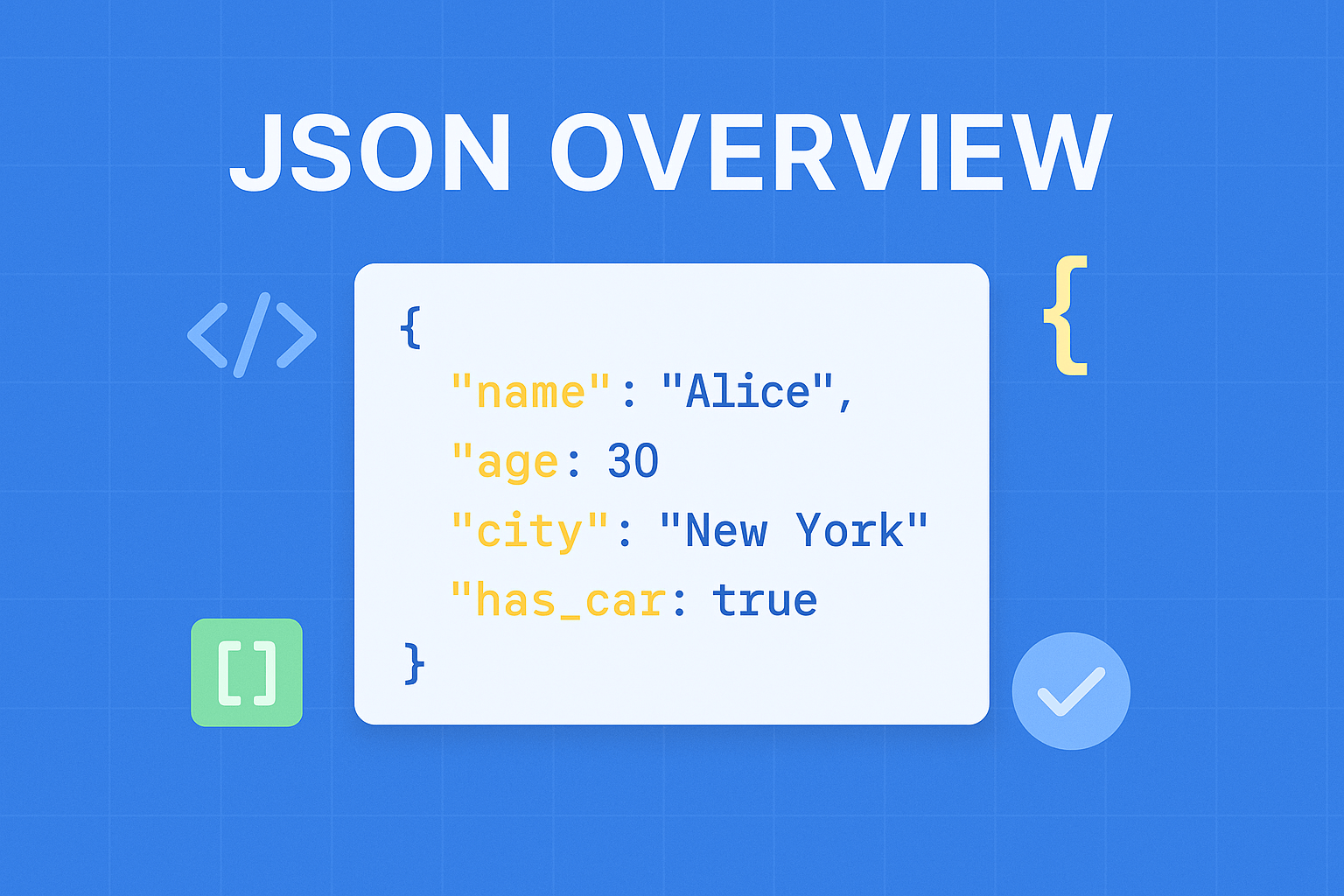
In this article, we’ll see JSON Overview.
Table of Contents
In the realm of modern web development, efficient data interchange is paramount. JSON (JavaScript Object Notation) has emerged as a widely adopted format for representing and transmitting structured data.
We’ll delve into the world of JSON, exploring its purpose, syntax, and benefits. Whether you’re a seasoned developer or just starting your coding journey, understanding JSON will unlock new possibilities for data exchange in your web applications.
What is JSON
JSON (JavaScript Object Notation) is an open standard format that uses easily readable text to transmit data objects consisting of key-value pairs. It is the most common data format used for asynchronous browser/server communication, largely replacing XML.
In the early 2000s, It was initially specified by Douglas Crockford. In 2013, It was standardized as ECMA-404, and RCF 8259 was published in 2017.
It is primarily used to transfer data over the network i.e. Server to Client. Because it is lightweight compared to XML, it’s replacing XML for transferring data over the network.
It serves as a standardized way to represent and transmit structured data, providing a flexible and efficient means of communication between different systems.
It has two structures:
- Key-Value: a collection of name-value pairs.
- Ordered List: ordered List of values.
Here is an example of JSON data.
{
"firstName": "Steve",
"lastName": "Jobs",
"phoneNumbers": [
"98334545",
"64655567"
]
}
JSON syntax is a subset of JavaScript syntax.
The JavaScript function JSON.parse(text) can be used to convert JSON text into a JavaScript object.
Benefits:
- Simplicity and Readability: Its concise and intuitive syntax makes it easy for both humans and machines to understand. Its simplicity contributes to quicker development and easier debugging.
- Language Agnostic: It can be used with any programming language, making it highly versatile and widely adopted across different platforms and systems.
- Easy Integration: It seamlessly integrates with popular web technologies, including JavaScript, making it ideal for exchanging data between web applications and APIs.
- Lightweight and Efficient: Its lightweight nature ensures fast data transmission, reducing latency and improving overall performance in web applications.
Integrating into Web Development:
- Consuming APIs: Many web APIs provide data in JSON format, allowing developers to easily extract and utilize the received information in their applications.
- Storage and Retrieval: It is commonly used for storing and retrieving data in databases, files, or even as configuration files, providing a standardized and flexible format for persistence.
- Client-Server Communication: It simplifies the exchange of data between clients and servers, facilitating seamless communication and enhancing user experiences.
- Data Manipulation and Transformation: Its simplicity makes it an ideal choice for manipulating and transforming data, enabling developers to extract relevant information and perform calculations efficiently.
Advantages and Disadvantages
Advantages :
- easy to read/write/parse
- reasonably succinct (compared with XML, for instance)
- common “standard” with many libraries available
Disadvantages :
- not as light as binary formats
- can’t use comments
- it’s “encapsulated”, meaning that you can’t readily stream/append data but have to break it up into individual objects. XML has the same problem, whereas YAML and CSV do not
- difficult to describe the data you’re presenting (easier with XML)
- unable to enforce, or validate against, a structure/schema
- It doesn’t have a “Date” type
- It isn’t efficient over the wire, binary protocols are better
It has become a game-changer in web development, offering a simple yet powerful approach to data interchange. By embracing JSON’s intuitive syntax and understanding its benefits, you can streamline data exchange in your web applications. Whether you’re retrieving data from APIs, storing information, or facilitating client-server communication, JSON’s versatility and compatibility will simplify your development process. Embrace the magic of It and unleash its potential to enhance data interchange, opening new doors for creative and engaging web applications.
I hope this article helps you understand the basics of JSON!